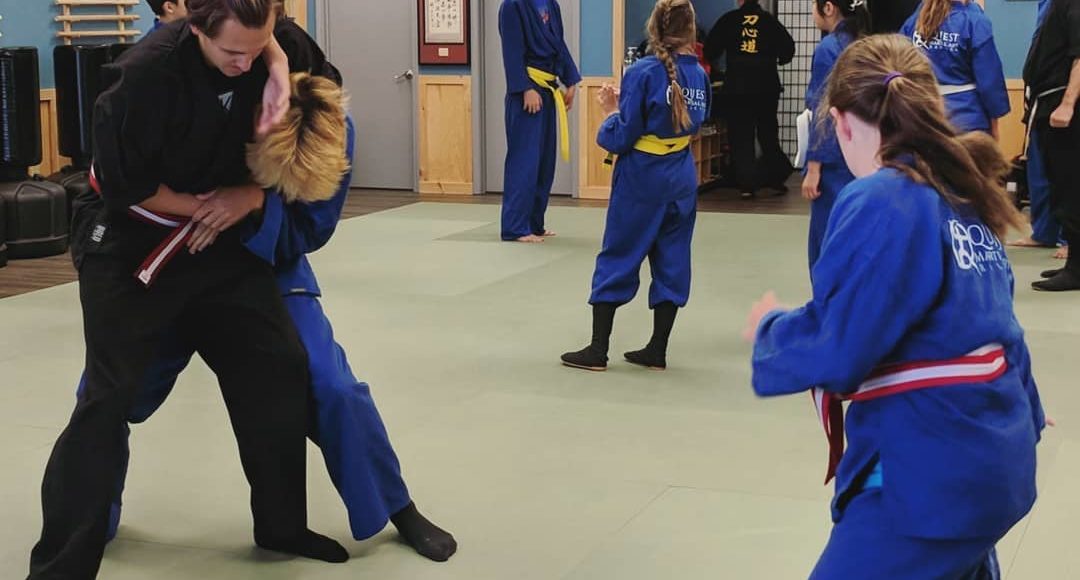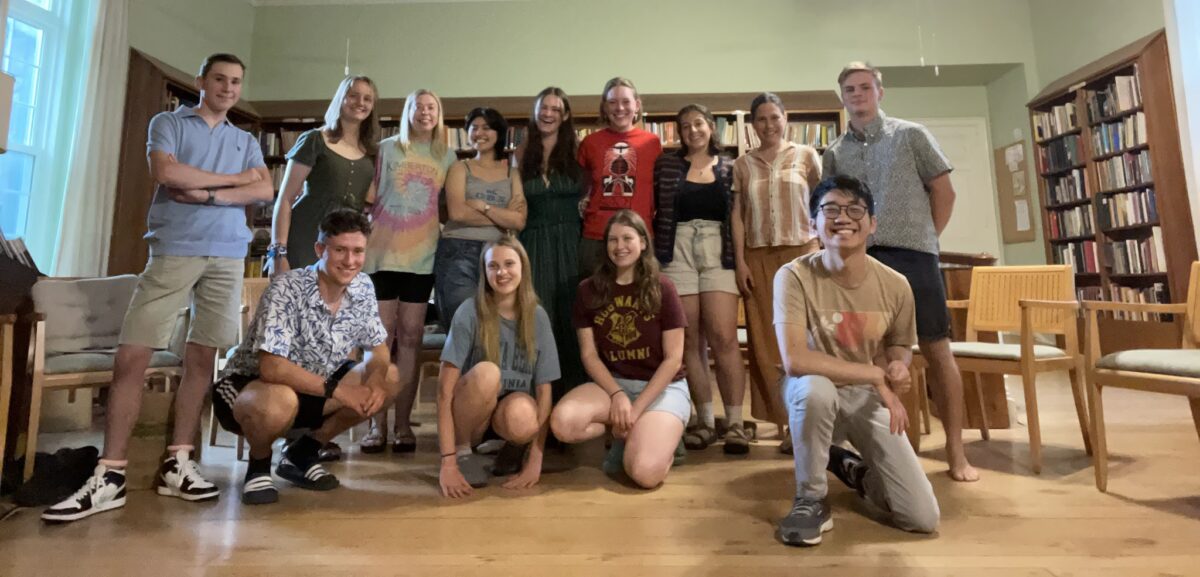Whenever anyone I meet asks what I am doing down here, I jokingly say, “Oh, my job is to punch kids all day,” but this really wasn’t far from the truth. This co-op I am working as a coach at Quest Martial Arts Raleigh (QMAR), a newly opened To-shin Do dojo in Raleigh, NC. It is owned and operated by Bryan Toutoshi Griffin. Bryan is a Go-dan, or 5th-degree black belt, who has been practicing and instructing To-shin Do self-defense for around 20 years. He opened QMAR about a year ago and has been building a thriving community of around 60 students ranging from 5 to 60 years old.
In To-shin Do, the coach has the specific role of ‘making the student’s day.’ Our job is to observe the students, and always notice what they are doing well and point it out to them. We also have to make sure the dojo atmosphere is generally positive and energetic. Another important role of the coach is to be an authentic uke, which is basically the ‘bad guy’, or the person that gives an attack that the tori, the student, can defend against and learn a given technique.
This job is a little harder than it sounds; most of us don’t go around every day trying to attack people or threaten them so most people who come in for lessons don’t really understand how you have to think and move in order to do the things that we are training to defend against. Obviously, since the students are learning and we want to be safe, we can’t just go around punching people at full force and speed at the dojo. So the art of being an uke or ukemi is learning how to be a realistic attacker and have that intention and authenticity of movement while going at maybe half the speed and force or less for beginning students. Hence my job being punching kids all day.
To-Shin Do is a self-defense martial art, meaning we train for real-world violent encounters and not sports competitions like boxing, judo, or karate. It comes from a 900-year-old lineage of Japanese martial arts known as ninjutsu, or the martial art of the ninja. However, since most people don’t face real violent threats in their everyday lives, it is also a system of self-development and problem-solving for non-physical encounters. We teach how to overcome problems like a ninja, not with superior strength or clashing with them head-on, but with wit and a superior spirit and motivation to overcome life’s daily challenges; these lessons are hidden within physical techniques of how to block a punch or redirect a kick.
During my time here, I’ve been out on the mat every day, making sure I find one good thing every student is doing each class and inviting them to find success in the techniques in the dojo so they can bring that success into the rest of their lives. Our headmaster has a saying: “katsumi tame ni” or “we train in order to win.” Ninjutsu is the art of winning—how to overcome superior strength, speed, and resources and still come out on top. I have never felt better than when seeing a student’s face light up when they finally get a technique and watching them walk out of the dojo a little taller than when they came in, ready to make the world a brighter place.





